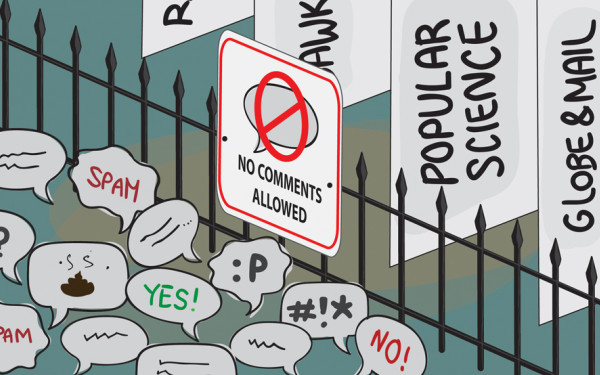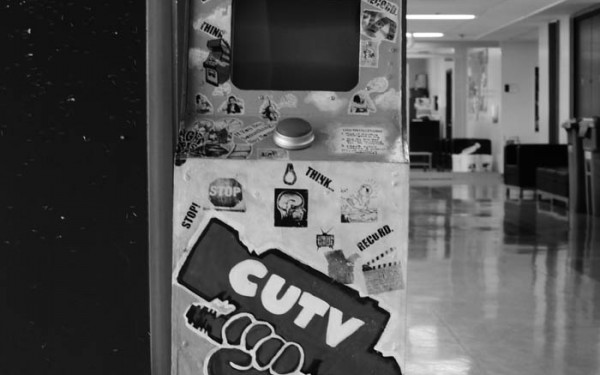Reshaping the Media Landscape
With two issues published to date, The Alpine Review’s business model is still very much an experiment.
Throughout the 285 pages of the Montreal-based magazine’s first issue, and the 315 pages of the second, the one thing you won’t find is any advertising.
It’s only sold online or through a limited amount of carefully selected stockists, where it comes with the hefty price tag of $35 per copy.
This would usually raise some flags when looked at through the lens of the ever-contracting magazine business. But when you speak with founder and publisher Louis-Jacques Darveau, you’ll find that thriving in the mass-market magazine industry was never the point anyway.
“I never really cared about the industry, the way it runs and operates, in respect to reliance on advertising and the complexities of distribution,” he said over the phone from Toronto.
“The idea was never to make it a profitable venture, it was to find a way to connect with people who share similar ideas.”
For the 39-year-old strategic advisor, it was more of a personal project than a business venture from day one. He had ideas he wanted to expand on, and after spending 15 years advising clients big and small, he felt ready to finance the project.
Along with co-editor Patrick Tanguay, the two Montrealers wanted to put together a platform where they could explore some of their overlapping ideas.
Darveau knew if he committed to making a tangible product such as a magazine, it would be easier to draw interest and collaborators.
“I wanted to show that I was committed to the process, not that I was trying to transform or tackle the industry’s problems,” he said.
Tanguay agreed that a printed product would be the best way to accomplish what they were looking to do.
“I think as a medium, print is the form that makes you think the most about the content, which is what we wanted,” he said.
A handshake sealed the deal with a printer in Barcelona, and 4,000 copies of Issue 1 were published in October 2012.
In terms of content, the magazine steps far away from Montreal and delves into a wide array of issues that make it hard to define. It’s not particularly niche, nor is it really a general interest magazine.
The first issue was centred on the idea of antifragility, a look at “what is antifragile, what is merely robust, and what will ultimately prove too fragile to survive the tumultuous future,” according to the magazine’s website.
The second issue, released last October, had the theme of “returns” and discussed how people reflect on the past to look for solutions to today’s problems.
Jeremy Leslie, author of The Modern Magazine: Visual Journalism in the Digital Era, called it “in-depth, intelligent and fascinating in its scope.” Science fiction author Bruce Sterling said it “makes Montreal look hipper than Berlin.”
A lot of this stems from its editors, who both said they wanted to approach everything about the magazine in a different way.
Instead of saying they interview subjects, they say they “borrow their brains for a few hours.”
When the magazine ran a piece on famous chef Jacques Pépin, “We didn’t just want to run a straight profile on him. It’s been done a thousand times,” said Darveau.
Instead, they asked him one question: why is it that chefs share their recipes?
“This idea was to find out why chefs share recipes very openly and it doesn’t impact their success, whereas in other industries, people want to protect what’s theirs,” said Darveau.
“It was a way of looking at the open-source model and showing that it’s not really a new idea,” said Tanguay
.
When one essay in Issue 2 tackled the topic of drones, it looked past the military conversation that usually dominates the subject, and focused on how the availability of drones will affect our everyday lives in the future.
3-D printing was another topic in the same issue, but served only as the frame for a discussion about jumping to conclusions when it comes to technology.
“We want to find that counterpoint or counterargument for each subject,” said Darveau.
So far, the magazine has sold best in Germany and the U.S., where Darveau says sales have been positive enough for a case to be made to increase the amount of copies printed, though he leans more towards the idea of exclusivity and keeping the number of copies around 3,000 per issue.
Darveau admits he doubts The Alpine Review will ever be profitable in the classical magazine sense, but in his most optimistic tone said he could see it reaching that level as a platform for an organization.
“I believe there could be a way to make this publication a vehicle for an organization that relates to the ideas we’re sharing, and this kind of thinking,” he said.
Tanguay added how they’d be interested in exploring a model similar to Offscreen Magazine, which ditched regular ads for sponsorships.
“A business model will need to emerge at some point,” Darveau said. “But if it’s not right, I’ll keep doing it on my own.”


_600_832_s.png)


_600_375_90_s_c1.jpg)

